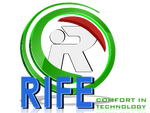Introduction
Efficiency, security, and accuracy are critical in the healthcare industry. With the increasing demand for better asset management and inventory control, hospitals and medical facilities are turning to cutting-edge technology. One such innovation is the medical RFID cabinet, a sophisticated RFID storage cabinet that automates inventory tracking, enhances security, and improves overall efficiency.
What is a Medical RFID Cabinet?

A medical RFID cabinet is a smart storage solution that integrates RFID technology to manage and track medical assets, medications, and critical supplies. Unlike traditional storage systems, these cabinets use radio-frequency identification (RFID) to automatically record item movements, ensuring real-time tracking and security.
Hospitals, clinics, and laboratories benefit from RFID-enabled cabinets by reducing human errors, preventing stock shortages, and improving compliance with medical regulations. These cabinets also streamline workflow, allowing healthcare professionals to focus on patient care rather than manual inventory management.
Key Features of a Medical RFID Cabinet
-
Automated Inventory Tracking
-
Real-time tracking of medical supplies, medications, and equipment.
-
Automatic updates to inventory management systems.
-
-
Enhanced Security Measures
-
Access control through RFID lockers and RFID card lockers.
-
Restricted access to authorized personnel only.
-
-
Efficient Workflow and Time Savings
-
Eliminates manual stock counting.
-
Instant alerts for low stock or expired medications.
-
-
Data Accuracy and Compliance
-
Reduces human error in stock management.
-
Ensures compliance with regulatory healthcare standards.
-
How Do RFID Storage Cabinets Work?
A medical RFID cabinet functions through embedded RFID readers and tagged items. Each item inside the cabinet is fitted with an RFID tag that transmits data to the cabinet's RFID reader. When an authorized person accesses the cabinet using an RFID card locker system or RFID electronic lockers, the system records every transaction automatically.
This technology eliminates the need for barcode scanning or manual logging, significantly reducing the risk of misplacement or theft. The collected data is then synced with hospital inventory management software, ensuring a transparent and up-to-date record of all medical supplies.
Advantages of Using RFID Storage Lockers in Healthcare
1. Improved Asset Security
One of the major concerns in medical facilities is the unauthorized use or loss of high-value equipment and medications. RFID storage lockers come with access control mechanisms that ensure only authorized personnel can retrieve items. This reduces theft and improper usage.
2. Real-Time Inventory Visibility
Hospitals often struggle with stock shortages or expired medications. RFID storage cabinet solutions provide real-time data on inventory levels, allowing staff to replenish supplies proactively and avoid critical shortages.
3. Regulatory Compliance
Medical institutions must comply with strict regulations for medication and equipment storage. RFID lockers and cabinets provide audit trails that make compliance effortless. Every access to the cabinet is logged, ensuring transparency and accountability.
4. Reduced Manual Workload
By automating inventory management, RFID storage lockers minimize the need for staff to manually track medical assets. This reduces human errors and frees up time for more important healthcare tasks.
Applications of RFID Storage Cabinets in the Medical Field
1. Pharmaceutical Inventory Management
Hospitals and pharmacies can use RFID storage cabinets to store and track high-value medications, ensuring proper stock levels and expiration monitoring.
2. Secure Medical Equipment Storage
Surgical tools, diagnostic devices, and emergency kits can be securely stored in RFID electronic lockers, allowing only authorized staff to access them.
3. Blood and Tissue Sample Management
Blood banks and research laboratories can use RFID-enabled cabinets to track and monitor temperature-sensitive samples, ensuring compliance with safety regulations.
4. Emergency Room & ICU Equipment
Fast access to life-saving equipment is crucial in emergency rooms and ICUs. RFID card lockers help staff quickly locate and retrieve necessary items without delays.
Implementing an RFID Storage Cabinet in Your Facility
Step 1: Identify Storage Needs
Evaluate the type and volume of medical supplies that need tracking. Consider factors such as storage space, security levels, and compliance requirements.
Step 2: Choose the Right RFID Cabinet
Select an RFID storage cabinet based on your needs. Options range from RFID lockers for individual access to RFID electronic lockers for secure medication storage.
Step 3: Integrate with Hospital Management Systems
Ensure seamless integration between your RFID-enabled cabinet and existing inventory management software to maximize efficiency.
Step 4: Train Staff and Implement Access Controls
Train medical staff on using the RFID card locker system and establish strict access controls for added security.
Future of RFID in Medical Storage Solutions
As healthcare facilities continue to evolve, RFID technology will play a crucial role in optimizing storage solutions. Future advancements may include:
-
AI-powered analytics for predictive inventory management.
-
Cloud-based monitoring for remote asset tracking.
-
Integration with IoT for enhanced automation and security.
Conclusion
The implementation of a medical RFID cabinet in healthcare facilities significantly enhances inventory management, security, and compliance. With RFID storage cabinets, RFID lockers, and RFID electronic lockers, hospitals can streamline their operations, prevent losses, and ensure that critical supplies are always available. As technology continues to evolve, RFID-based storage solutions will become an indispensable asset in modern medical environments.

